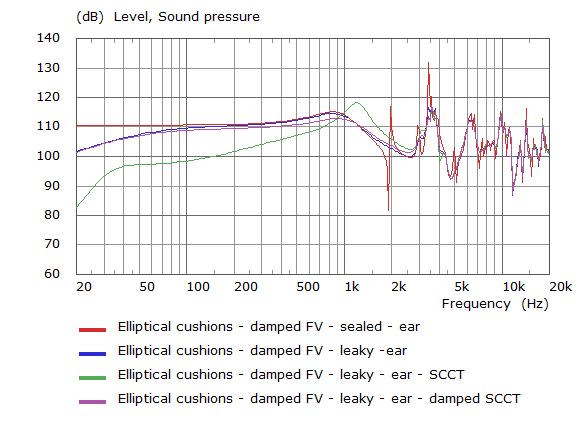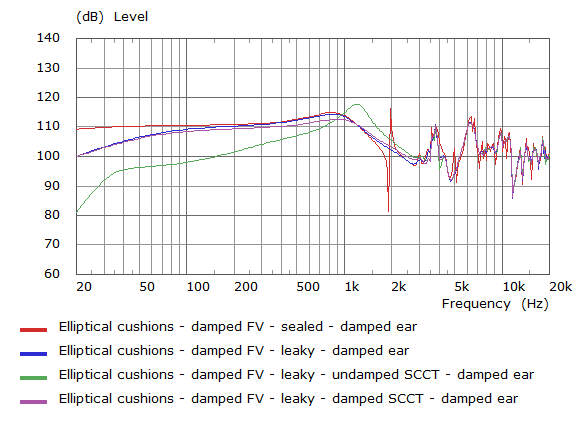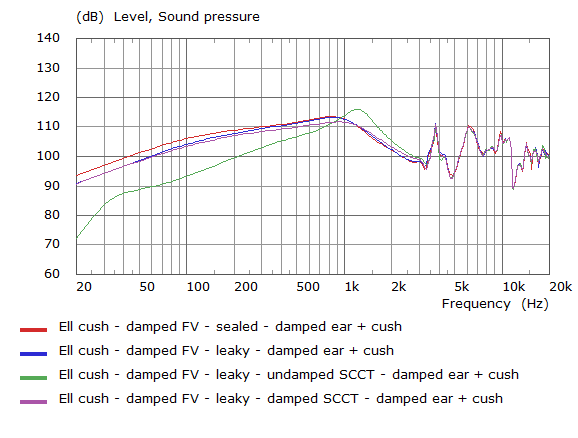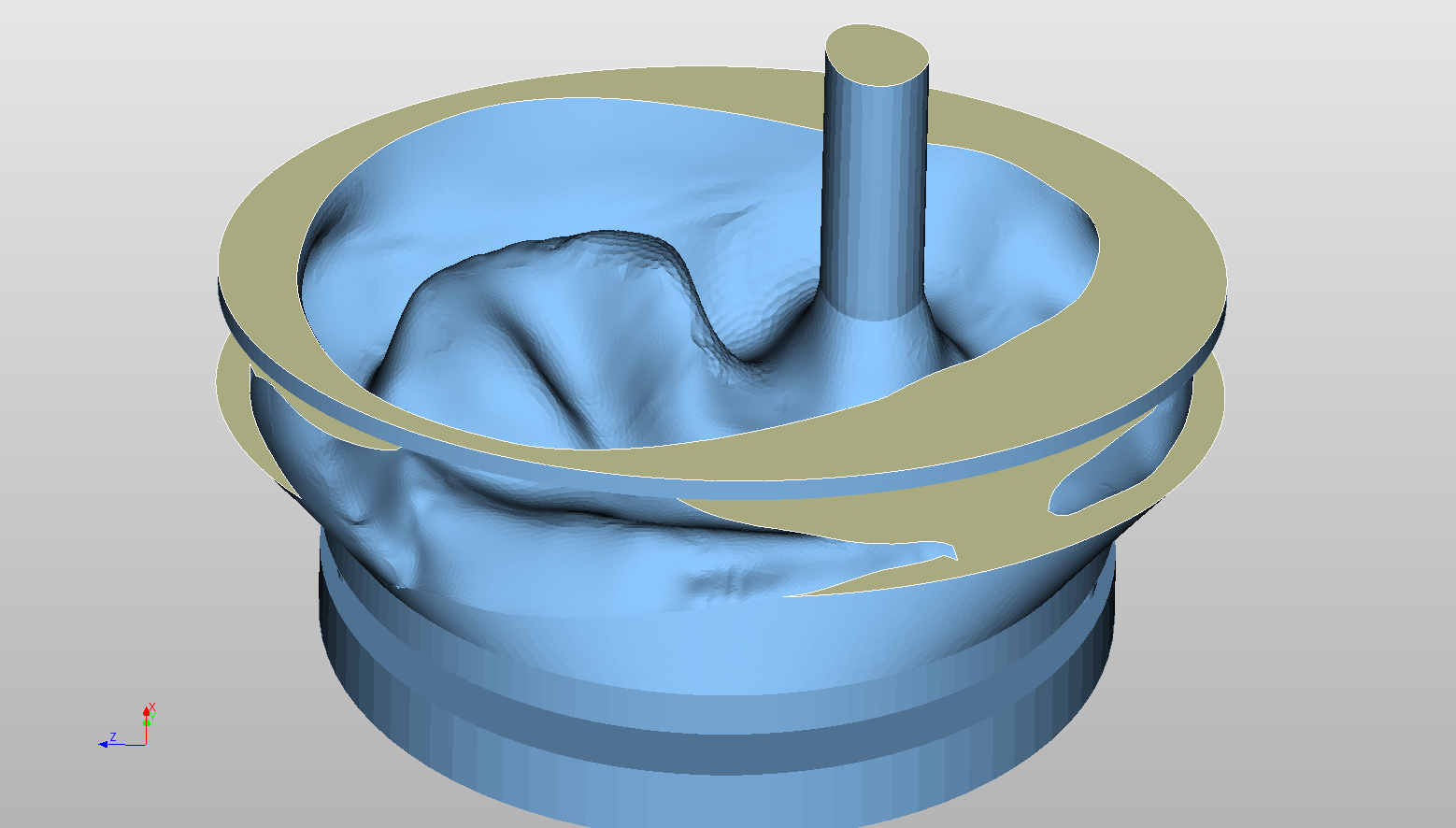Effect of Including Ear and Cushion Losses
We have previously constructed a more complete model where the driver, headphone module and ear are simulated. Within that, different "tuning" features were evaluated:
- Driver with bass port and damped frame vents operating in a sealed 2 cavity module
- Driver with bass port and damped frame vents operating in a 2 cavity module with cushion-head leak
- Driver with bass port and damped frame vents operating in a 2 cavity module with cushion-head leak plus acoustic short circuit between rear and front air volumes
- Driver with bass port and damped frame vents operating in a 2 cavity module with cushion-head leak plus damped acoustic short circuit between rear and front air volumes
An observed problem with the models was the high magnification of the response due to the undamped ear canal acoustic resonance. The damping model previously developed was applied to the "eardrum" so that this magnification was reduced to more realistic levels.
A comparison between these scenarios when the ear canal has been damped is shown below:
No Ear Damping Applied

Ear Damping Applied

The main effect of applying the damping to the ear canal is to reduce the SPL at the resonant frequencies 3.8kHz, 9.7kHz and 14.2kHz.
The upper response is also very choppy which may be due to cavity modes in the front volume which can be controlled by selecting higher loss cushion materials. Again, surface absorbency can be applied to invesigate this.
Effect of Adding Damping to the Cushion Surface:

Below is an illustration showing regions where surface absorbency has been applied to model a gap-leak, ear canal loss and cushion absorbency:

The overall effect of adding absorbency to the cushions is to eliminate the high Q acoustic resonances in the cavity. Adding a finite amount of damping to these models is important to prevent "theoretical" features appearing in the results which in most practical scenario would not be evident.


